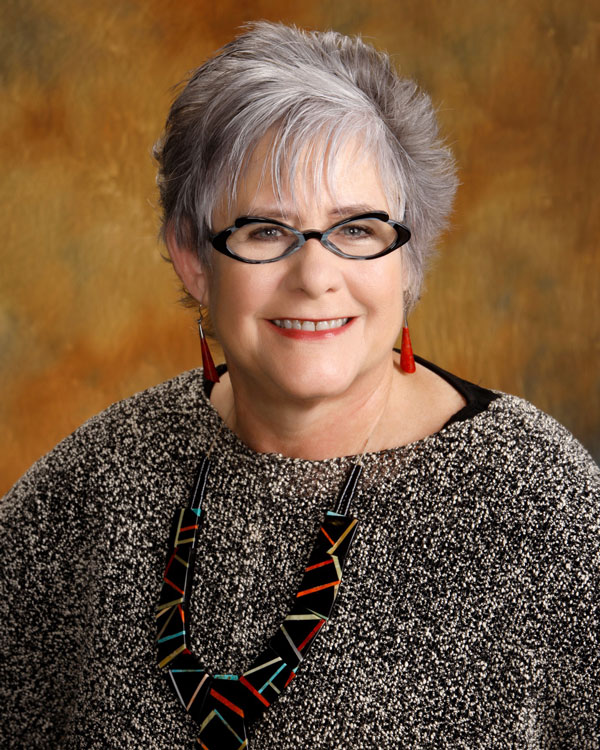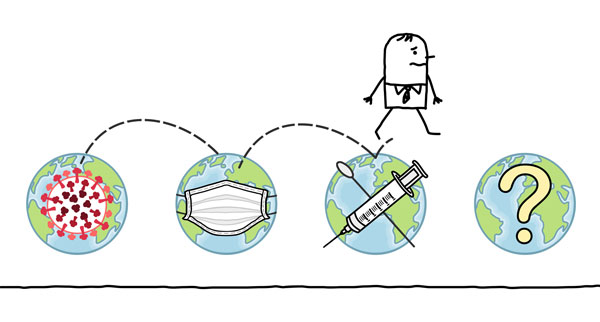Strategies to help us adapt to the next step of our collective pandemic journey

As the number of COVID-19 vaccinations increases, the threat of the disease is decreasing in the United States, ushering us into the next step of our pandemic journey. Even though some safety precautions will still be required, Sandia leaders are looking ahead to this next phase — leveraging technology, rethinking workspaces, redefining workflows and exploring potential hybrid work models. Efforts are being made to expand long-term flexible work options and optimize limited space.
We are certainly not going back to “normal” or even to a pre-COVID-19 world. Instead, we are entering an unexplored space where everyone must adapt since the past and present are no longer good predictors of the future. Keeping an open mind and being willing to learn with agility will be key so that we can assess what’s relevant, ignore what isn’t, quickly absorb and apply new concepts, evaluate results, bring lessons from the last year forward, experiment and pivot to seize new opportunities.
A sudden transition to a new work environment
Think back to March 2020. With zero planning and no warning, most of us switched to working remotely in just a few weeks! As one of my clients said, “If we had been told that at some point in the future we would have to work remotely, Sandia would still be running our pilot a year later.” We did in two weeks what people have been trying to do for years.
The transition from having almost everyone on-site to having a majority of remote workers was not easy. Challenges included finding the right technology, communicating with colleagues and customers and helping our geographically distributed teams still feel like teams.
By working through these challenges, we have learned to function at an even higher level and realized that we can remain tightly connected to our work, teams and mission — even from a distance. This unprecedented period unleashed people’s talents, creativity and passions in a way that simply isn’t possible under “normal” conditions.
Lessons learned with applications for the future
All of us were faced with an “impossible” demand, and together we made it happen. And we learned. Some of these lessons can be applied to our new work approach — redefining how, where, when and by whom work gets done going forward.
We now know the following is possible:
- Staying connected as a team even if not physically in the same place.
- Being productive while working remotely.
- Meeting deliverables and milestones while managing flexible workspaces and schedules.
- Managing our work time at home and developing new work rhythm.
We noted what helped during remote working:
- A strong virtual onboarding process for new staff.
- Shorter meetings with clear agendas to reduce virtual meeting fatigue.
- Frequent town hall meetings to help us stay informed.
- Manager check-ins and virtual office hours.
- Frequent informal feedback and coaching.
We learned lessons about our work styles and how to better manage our workdays:
- Most of us do not miss our commute, although some of us miss the thinking and decompression time afforded by our prior commutes.
- Tip: Take a walk at the end of your workday to think and decompress.
- Blurred boundaries between work and home can make us feel like we are living at work rather than working at home.
- Tip: Create firm boundaries and take time for self-care.
- Days dominated by back-to-back meetings mean that processing and working on tasks happens after the working day.
- Tip: Protect blocks of thinking and working time in your office calendar.
Different perspectives on the next phase

Remote work has been a boon for some people, giving them more time with family and more freedom and flexibility over their schedules, plus the comforts of home. But for others, remote work has also been burdensome — with distractions from kids, partners and roommates, makeshift workspaces and little to no divide between work and home life.
Some Sandians have been mostly on-site this past year and have become accustomed to the space, the quiet and the critters. They will definitely feel the shift as more people return to offices, vaults and labs.
We are as different in how we see the next reentry phase at Sandia as we are in everything else. Some of us are ready to end working from home and get on-site. More are hoping for a hybrid schedule that allows them to continue remote work part of the time. Most of us will go back to the office at least some of the time. And we have learned that many of us are hungry for the connection, camaraderie and innovation that come from gathering in person.
But some are panicking about the inevitable return to their old pre-pandemic office work routine. On-site reentry anxiety is real. Reentry anxiety is a combination of the overwhelming thought of reacclimating to an office environment we have not seen in more than a year and the fact that — despite vaccines — the COVID-19 pandemic is not over yet.
Questions without definitive answers
For now, most of our thinking about the next phase — reentry and reintegration to work on-site — revolves around questions rather than definitive answers:
- What will work look like in the coming months?
- When might I need to go to the office?
- Will I have the same workspace?
- Will I have to share my space?
- What expectations will my manager have of me?
- What flexibility might exist?
These are all fair questions to be asking, and everyone is grappling with the need to create clear expectations about what work will look like as we build Sandia’s future.
One of the key obstacles is the fact that no one really knows the answers to these questions right now. Even the most intentional leaders are trying to create some level of clarity for us while many of the variables are still quite dynamic. We are facing a whole new wave of making decisions without adequate data. This lack of clear answers weighs on people, some more than others.
Sandia’s goal is to develop a culture that is equally supportive of remote and on-site workforce members. The new and developing realities will evolve, but regardless of the difficulties, we all have an opportunity to create an even better workplace — one that allows us to be more connected to one another, find more balance between work and home and advance equality — ultimately leading to increased innovation, creativity, job satisfaction and better business outcomes.
Navigating this tumultuous time
If you are feeling uneasy or anxious about what the future holds, you have lots of company. Here are a few things to consider to help you navigate this tumultuous time:
- Be patient with yourself and others. This is a new and unique situation that everyone is going through. Despite our best efforts, mistakes and adjustments will be made. Give yourself space to be patient and understanding with yourself and others as we all work to find our way to our future world of work at Sandia.
- Be prepared. Understanding yourself, your needs and your “signals” will help you to be attuned to how you are reacting. The situation will, no doubt, continue to evolve, but you can find some comfort in focusing on being in control of what you can influence.
- Talk to your coworkers and manager. You’re not going through this by yourself, and the questions you have are shared by others. Find ways to engage others in dialogue about the realities of the situation: what is known, what is not and the path forward. If you’re comfortable with being vulnerable, find ways to share your emotions and fears associated with the future. Let people know what you need so they can help.
- If you are in a leadership position, overcommunicate. Anxious team members are going to fill any silence with noise, and oftentimes the stories we tell ourselves may not be grounded in fact and reality. Don’t let open space fill with anxiety. Make extra time and effort to communicate early and often. It may feel like you’re overdoing it, but you’re not. People want to be a part of the process and feel in the know, so look for ways to actively include them in figuring out a path that works for the group and the diverse people on the team.
- When the anxiety of the unknown begins to swell, sometimes the best first step is simply to stop for a beat and breathe. There are plenty of fantastic resources out there to help guide you in learning how to take a pause, breathe and recenter yourself. Check out the resources offered by Preventive Health (in CA, call 925-294-3500; in NM, call 505-284-4700, Option 1).
- Get help. If you find that the anxiety associated with these changes is becoming too much to manage, be honest with yourself, and acknowledge that it may be time to reach out to Sandia’s Employee Assistance Program (in CA, call Sharon Johnson at 925-294-6433; in NM, call 505-844-4237, Option 1).